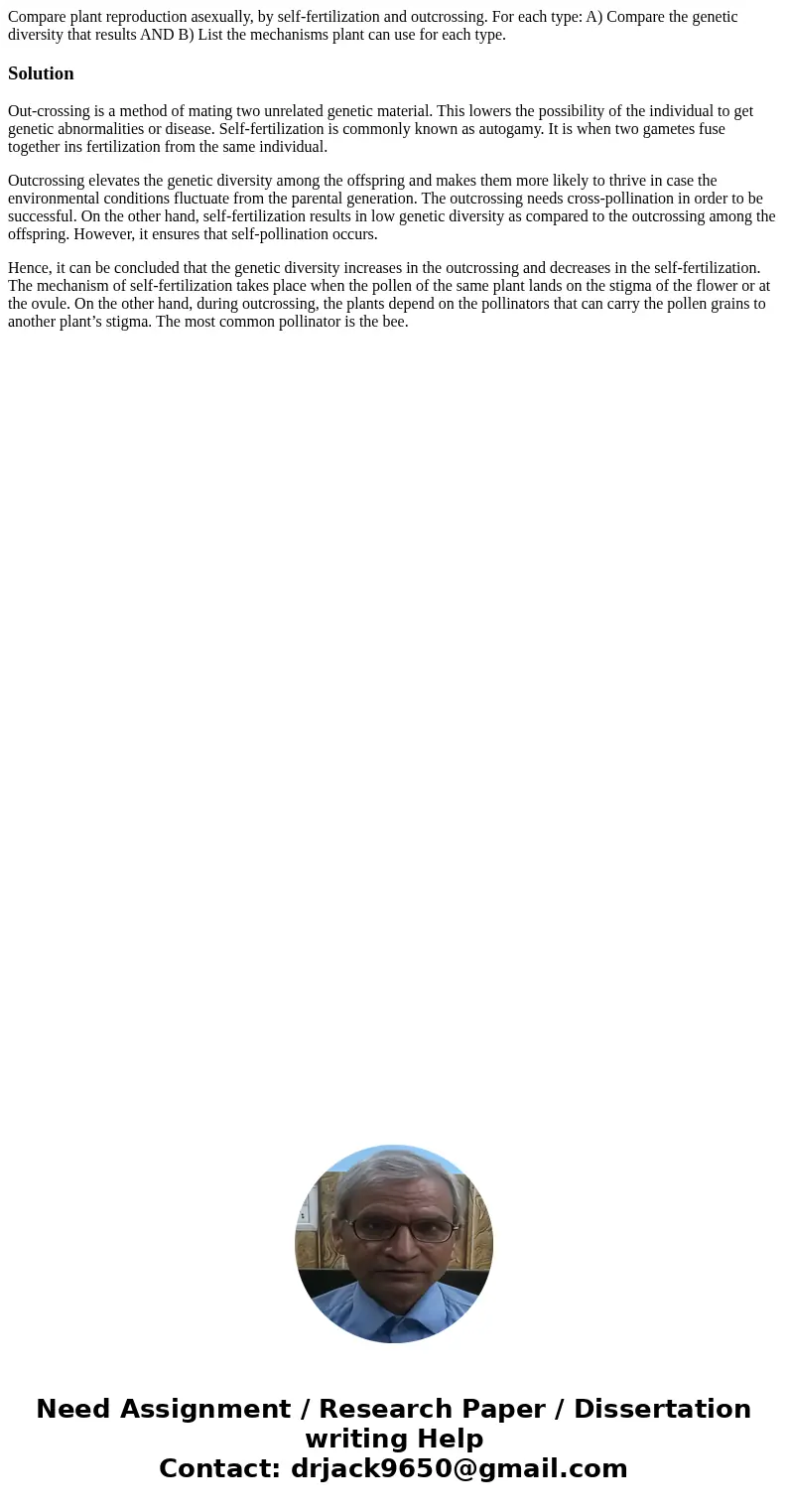Compare plant reproduction asexually by selffertilization an
Compare plant reproduction asexually, by self-fertilization and outcrossing. For each type: A) Compare the genetic diversity that results AND B) List the mechanisms plant can use for each type.
Solution
Out-crossing is a method of mating two unrelated genetic material. This lowers the possibility of the individual to get genetic abnormalities or disease. Self-fertilization is commonly known as autogamy. It is when two gametes fuse together ins fertilization from the same individual.
Outcrossing elevates the genetic diversity among the offspring and makes them more likely to thrive in case the environmental conditions fluctuate from the parental generation. The outcrossing needs cross-pollination in order to be successful. On the other hand, self-fertilization results in low genetic diversity as compared to the outcrossing among the offspring. However, it ensures that self-pollination occurs.
Hence, it can be concluded that the genetic diversity increases in the outcrossing and decreases in the self-fertilization. The mechanism of self-fertilization takes place when the pollen of the same plant lands on the stigma of the flower or at the ovule. On the other hand, during outcrossing, the plants depend on the pollinators that can carry the pollen grains to another plant’s stigma. The most common pollinator is the bee.

 Homework Sourse
Homework Sourse